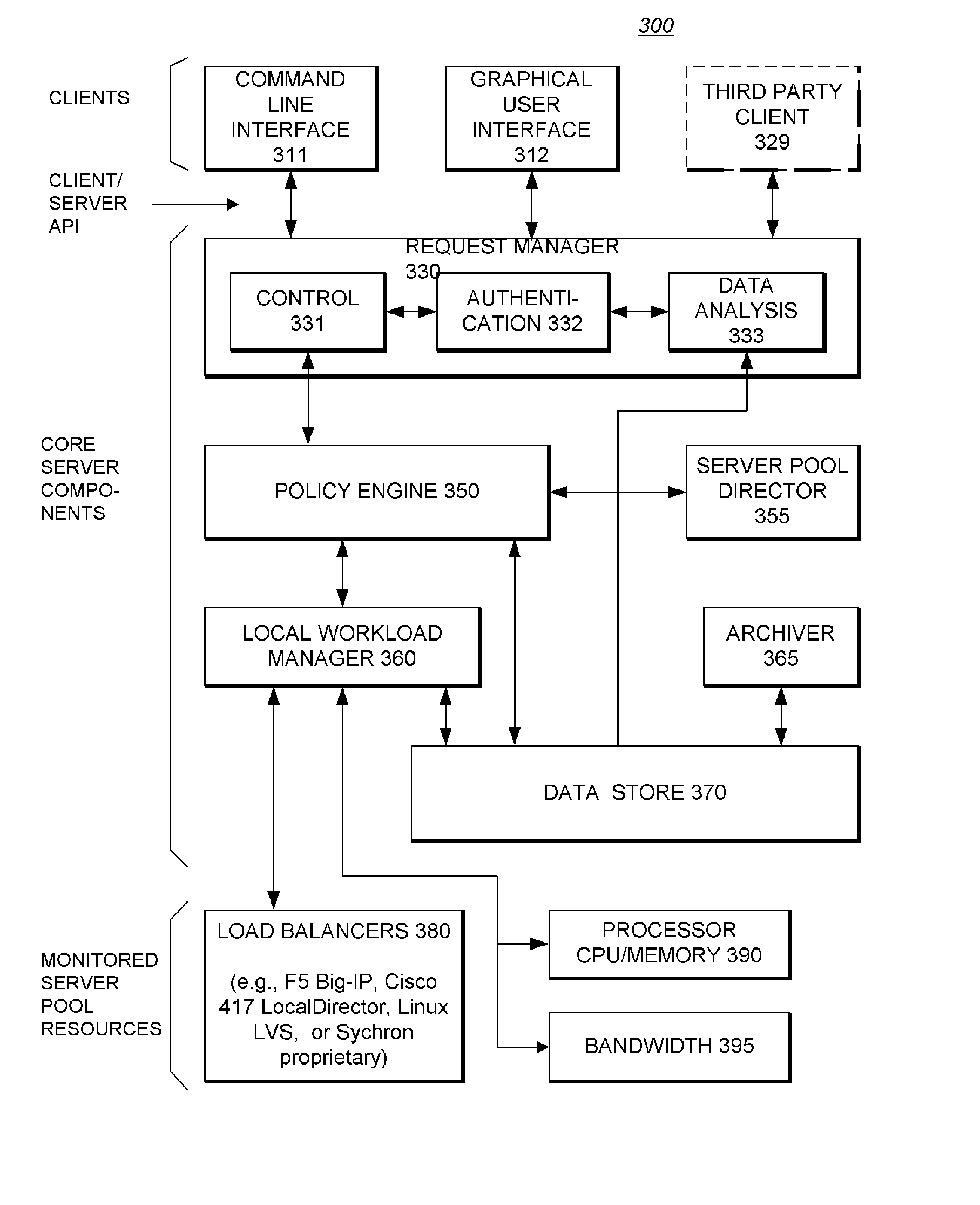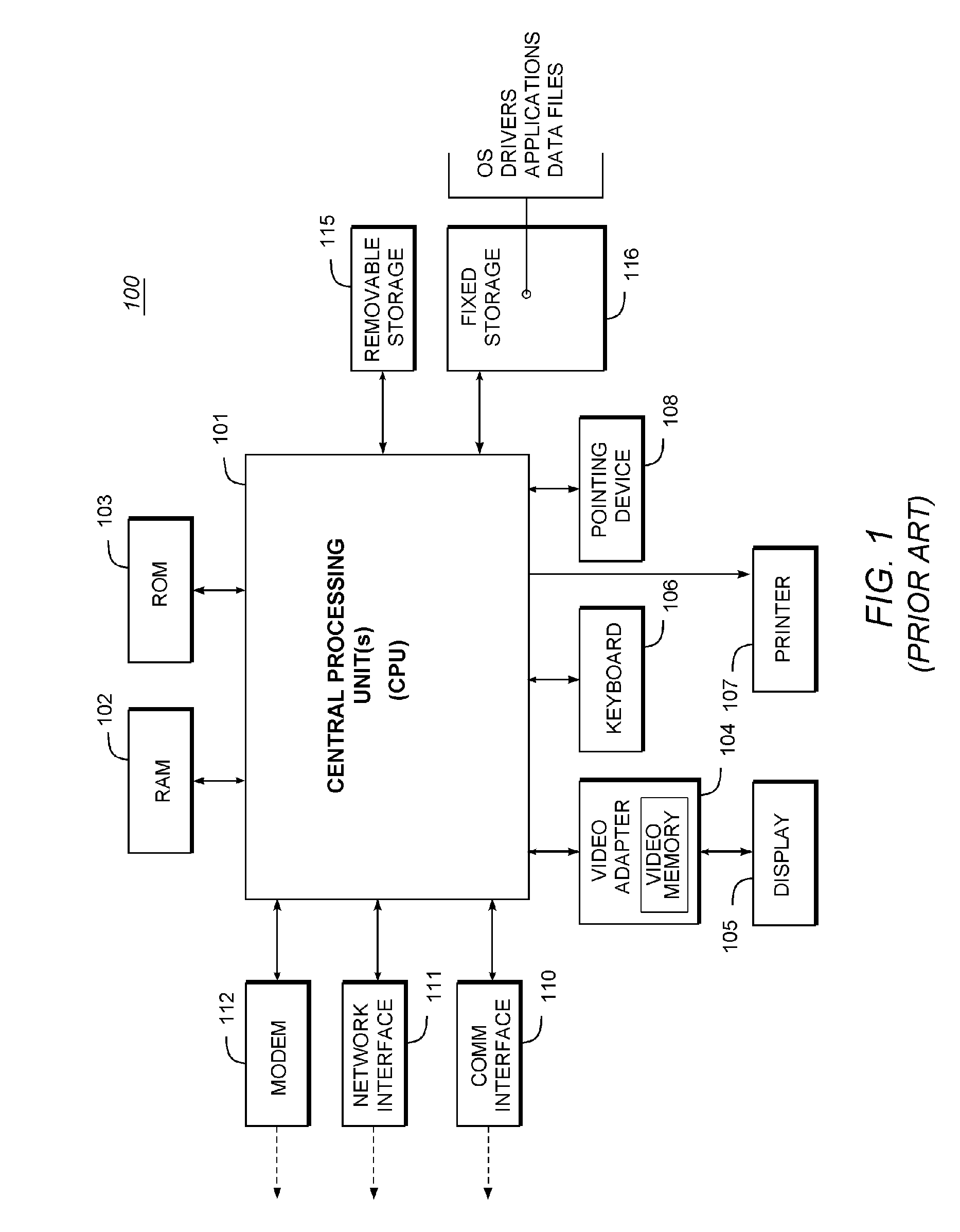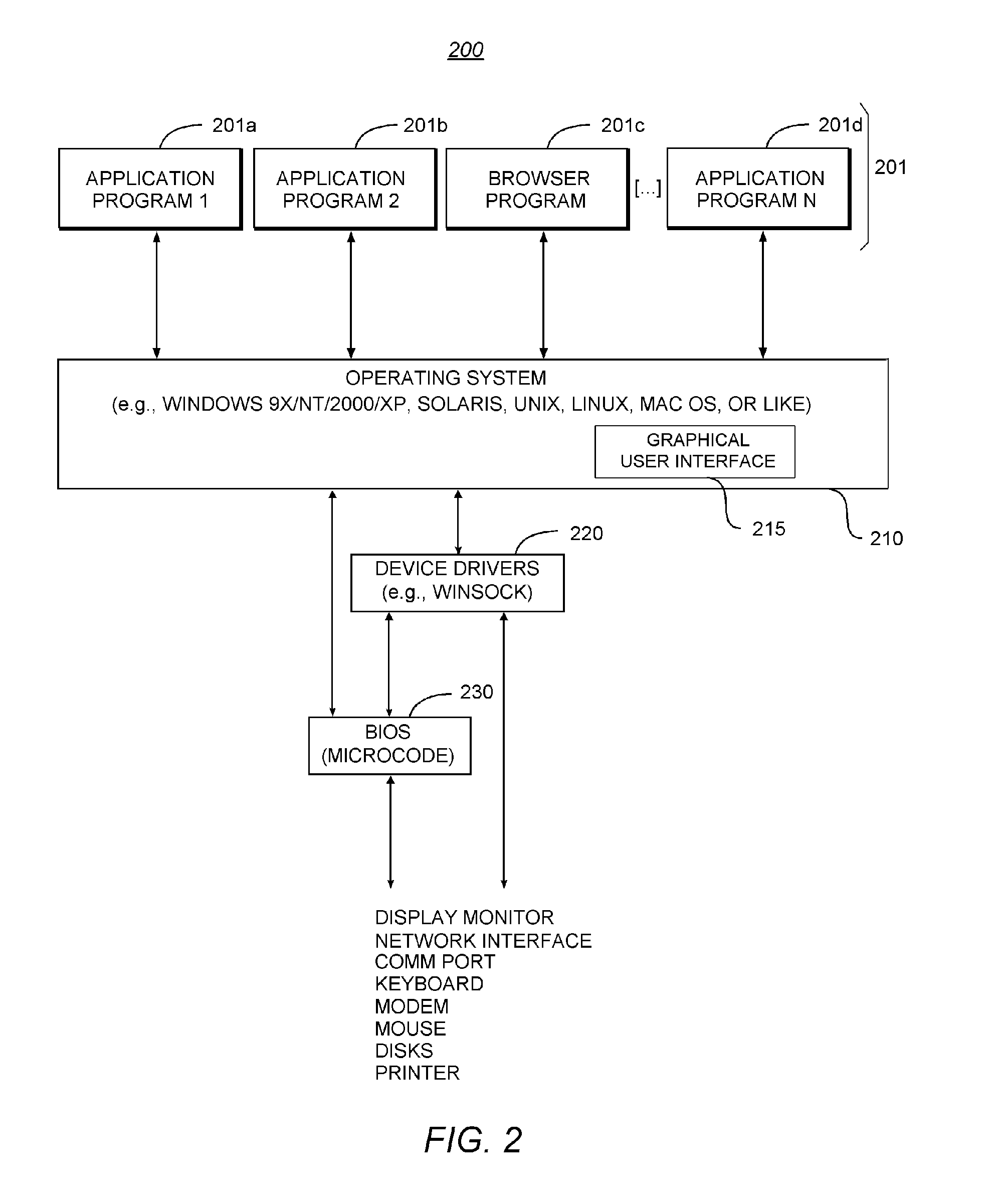System Providing Methodology for Policy-Based Resource Allocation
a technology of resource allocation and system providing, applied in the field of information processing environments, can solve the problems of increasing the cost of providing information technology (it) services, maintaining and managing all of these tiers, and the most expensiv
- Summary
- Abstract
- Description
- Claims
- Application Information
AI Technical Summary
Benefits of technology
Problems solved by technology
Method used
Image
Examples
Embodiment Construction
Glossary
[0030] The following definitions are offered for purposes of illustration, not limitation, in order to assist with understanding the discussion that follows.
[0031] Burst capacity: The burst capacity or “headroom” of a program (e.g., an application program) is a measure of the extra resources (i.e., resources beyond those specified in the resource policy) that may potentially be available to the program should the extra resources be idle. The headroom of an application is a good indication of how well it may be able to cope with sudden spikes in demand.
[0032] For example, an application running on a single server whose policy guarantees that 80% of the CPU resources are allocated to this application has 20% headroom. However, a similar application running on two identical servers whose policy guarantees it 40% of the resources of each CPU has headroom of 120% of the CPU resources of one server (i.e., 2×60%).
[0033] CORBA: CORBA refers to the Object Management Group (OMG) ...
PUM
 Login to View More
Login to View More Abstract
Description
Claims
Application Information
 Login to View More
Login to View More - R&D
- Intellectual Property
- Life Sciences
- Materials
- Tech Scout
- Unparalleled Data Quality
- Higher Quality Content
- 60% Fewer Hallucinations
Browse by: Latest US Patents, China's latest patents, Technical Efficacy Thesaurus, Application Domain, Technology Topic, Popular Technical Reports.
© 2025 PatSnap. All rights reserved.Legal|Privacy policy|Modern Slavery Act Transparency Statement|Sitemap|About US| Contact US: help@patsnap.com



